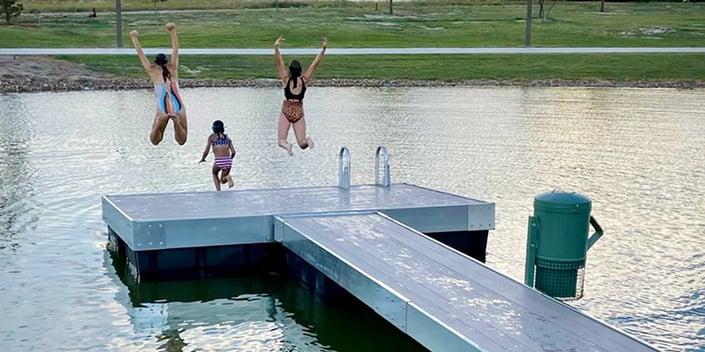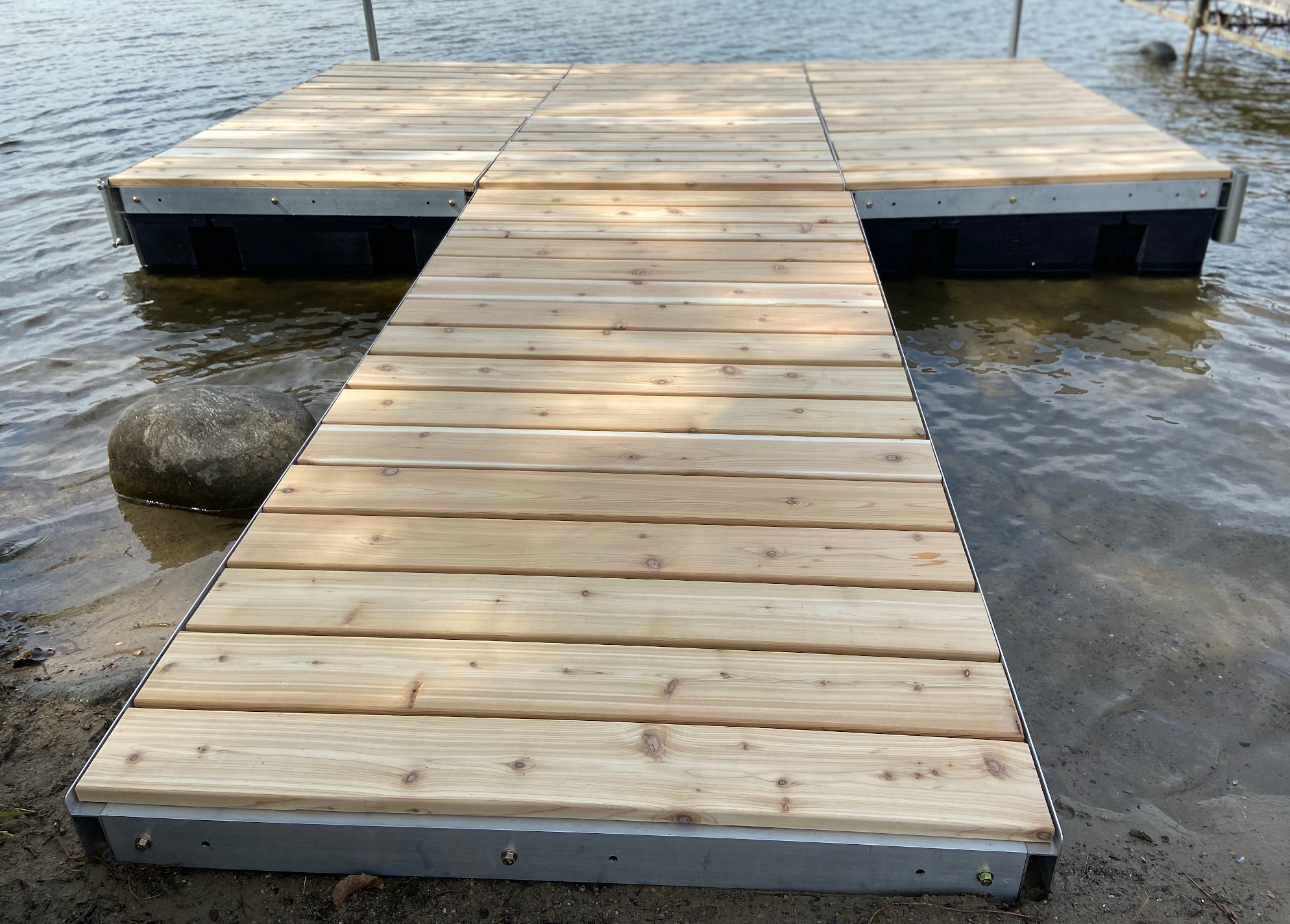Discover the Variety Of Floating Dock Services Designed to Suit Every Sailor's Demands
Discover the Variety Of Floating Dock Services Designed to Suit Every Sailor's Demands
Blog Article
Upgrade Your Waterfront With Durable Floating Docks
Updating your waterfront with sturdy floating docks can substantially enhance both performance and aesthetic appeals, giving a flexible remedy for various water activities. These structures are developed to adapt to ever-changing water degrees, ensuring safety and security and accessibility throughout the seasons. With an array of materials readily available, consisting of low-maintenance options and traditional timber, choosing the appropriate dock can complement your personal style and satisfy functional needs. Understanding the subtleties of setup and upkeep is vital for making sure longevity and performance. What factors should you think about when making this investment?
Benefits of Floating Docks
Floating docks offer a wide variety of advantages that improve their charm for various maritime applications. Unlike standard set docks, floating docks increase and loss with the trend, making sure constant access for boats and boat regardless of environmental problems.
Furthermore, floating docks are easier to install and relocate, giving flexibility for seasonal or short-lived usage. Their modular style enables customization to fit particular requirements, whether for private marinas, property watersides, or business applications.
Additionally, floating docks produce very little disturbance to the water atmosphere, maintaining local ecosystems and lowering the likelihood of erosion. They also give enhanced security and stability for customers, as their resilient nature uses a much more flexible surface than rigid frameworks.
Moreover, floating docks can promote a varied range of tasks, such as angling, swimming, and recreational boating, making them a valuable possession for beachfront advancement. Their convenience and practicality make floating docks a recommended option for a range of maritime jobs.
Choosing the Right Products
Choosing ideal products for floating docks is essential to their long life, efficiency, and total effectiveness. When picking products, consider variables such as ecological exposure, maintenance requirements, and architectural integrity. Typical materials consist of wood, plastic, light weight aluminum, and composite alternatives, each offering distinct advantages and negative aspects.
Timber, while visually pleasing, calls for routine maintenance to prevent rot and degeneration. Pressure-treated timber can boost durability, but it may still catch water damages with time. Plastic floats, often made from high-density polyethylene, are immune to deterioration and need minimal upkeep, making them an appealing choice for low-maintenance applications.
Aluminum is an additional sensible alternative, recognized for its stamina and lightweight residential properties. It is resistant to corrosion and can hold up against rough weather, although it might be more pricey than various other materials. Composite products combine the very best qualities of timber and plastic, using a low-maintenance and durable choice that simulates the appearance of timber without the linked drawbacks.
Inevitably, the option of material need to line up with the meant use, environmental considerations, and budget plan restraints, making certain a long lasting and practical floating dock that fulfills your certain requirements.
Installment Process Introduction
The effective installation of a floating dock counts on careful planning and execution, making sure that it operates successfully in its intended environment. The very first step involves assessing website problems, consisting of water deepness, coastline functions, and prevailing weather patterns, which will certainly educate the dock style and anchoring system.
Following the site analysis, the next stage is to prepare the floating dock parts. Home Page This consists of putting together the structure, safeguarding floats, and connecting any kind of required hardware. It is essential to make certain that all connections are waterproof and robust to withstand marine conditions.
When the dock is constructed, the installment procedure starts with positioning the dock in the water. This can involve a crane or other lifting tools, specifically for larger frameworks. Correct alignment is crucial for functionality and security.

Maintenance Tips for Longevity
Normal maintenance is crucial for making certain the durability and optimum performance of a drifting dock. To achieve this, start with regular evaluations at the very least twice a year, concentrating on the stability of the dock's structure, including the flotation gadgets and attaching hardware. Search for indications of wear, damages, or deterioration, and resolve any type internet of issues promptly to prevent further wear and tear.
Cleaning up is another essential element of upkeep. Get rid of particles, algae, and barnacles from the dock's surface to avoid unsafe conditions and preserve aesthetic appeal. Make use of a light detergent and a soft brush to prevent harming the dock's products.
In addition, guarantee that the dock is appropriately secured and protected to endure seasonal adjustments in water levels and weather. Examine the anchoring system for stability and make modifications as needed.
Enhancing Your Outdoor Aesthetic
To produce a visually appealing exterior room, including a drifting dock can substantially enhance the total visual of your waterfront building. Floating docks are not only practical but can likewise work as a striking centerpiece that enhances the all-natural surroundings - floating dock builder. Readily available in numerous materials and designs, these docks can be tailored to match your residential property's architectural style and landscape
The enhancement of attractive elements, such as integrated lights or stylish barriers, further elevates the dock's visual hop over to here charm. Consider using natural wood finishes, which blend effortlessly with the atmosphere, or selecting contemporary materials like light weight aluminum or composite outdoor decking that provide a smooth, contemporary appearance.
Tactically putting planters or seating areas on or around the dock can produce welcoming spaces that encourage relaxation and satisfaction of beachfront sights. In addition, integrating colors and structures that balance with your landscape will certainly create a natural aesthetic throughout your outdoor area.

Conclusion

Updating your waterside with resilient floating docks can considerably boost both performance and visual appeals, giving a versatile service for various water tasks. Unlike conventional set docks, floating docks increase and autumn with the trend, ensuring constant availability for boats and watercraft no matter of ecological problems.Selecting proper materials for floating docks is important to their long life, performance, and overall performance.As soon as the dock is constructed, the installment procedure commences with placing the dock in the water.In summary, floating docks deal many advantages, consisting of flexibility to water degree adjustments and a selection of material options.
Report this page